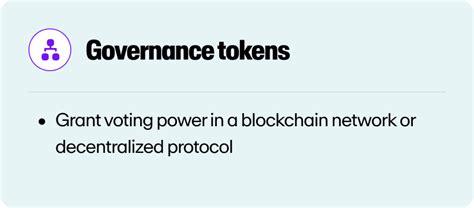Understanding the steering tokens with ruffles (XRP): Comprehensive Guide
The world of cryptocurrencies experienced an increase in innovative blockchain-based solutions, one of which is government tokens. Specifically, due to the decentralized management model of the Ripple XRP -TOKenje, it has received considerable attention and is an attractive choice for investors and users alike. In this article, we are immersed in the concept of government tokens, their differences with traditional tokens, and how they work with Ripple (XRP).
What are the steering tokens?
Government tokens, also known as utility tokens or voting tokens, is a type of cryptocurrency that represents the ownership of the project or organization. It is designed to provide the parties to the parties to participate in decision -making processes and to vote on proposals. Unlike traditional tokens, which are primarily aimed at ensuring value when using a replacement medium (such as bitcoin), the steering tokens use a participation approach.
How do government tokens work?
Governance tokens usually follow a particular structure:
- Owner : Owners hold the token, represent their stake in the project or organization.
- Voting Mechanism : When changing or modifying the rules of the token, the investor may vote with the help of the management token.
- Decision -making : The voting mechanism ensures that the proposals are voted on by all token owners and the decisions are made by the majority of the vote.
Ripple (XRP) Governance token
The ripple XRP token was designed to keep decentralized control. Here are some key features:
- Decentralized decision -making
: Ripple (XRP) The stake director (POS) operates on a consensual algorithm, which means that the network relies on validators to create new blocks and secure security.
2.
- Customized Voting Mechanism

: The Ripple Management Model allows for customized voting options, allowing token owners to propose changes or modifications with specific tokens.
Advantages of Governance Tokens
Governance tokens offer many benefits including:
- Increased transparency : Decentralized control ensures that all stakeholders can access the decision -making process.
- Improved accountability : Token owners can see who voted to provide greater transparency and confidence in the project.
3.
Challenges and risks
While government tokens offer a number of benefits, they have some challenges and risks:
- Centralization Risk : Ripple’s centralized management model can lead to concerns for which token is controlled by a single organization.
2.
- Regulatory uncertainty : Government tokens regulatory landscape is still developing and their use can be faced with some jurisdictions.
Conclusion
Governance tokens, such as the Ripple (XRP) token, are a significant shift towards compassion-based blockchain-based solutions. By understanding the concept of governance tokens, you can navigate better in this new world and make sound decisions about investments.
As we continue to see the growth of government tokens, it is essential to keep up to date with developments in the industry and the best practices for the use of innovative tools.
References:
- “Ripple Labs” (official website)
- “XRP LEDGER Foundation” (official website)
- “Blockchain for social impact” (Dr.
